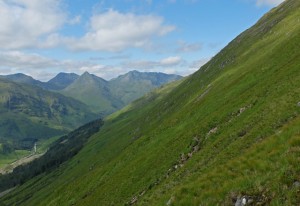2010 Olympics – Throwback Thursday
/0 Comments/in Blower Truck Services, Construction Landscape Journal, Corporate News, Environment, Green Infrastructure, Grinding, Landscape, Manufacturing, Municipal and Infrastructure Journal, Projects, Sediment Control, Seeding, Slope Stabilization, Soil, Spring Landscape Ideas, Summer Landscape Ideas, Sustainable Development /by Tanya RichardsSki Jump construction for the 2010 Olympics – Looking Back
/0 Comments/in Construction Landscape Journal, Erosion Control, Projects, Slope Stabilization, Sustainable Development /by Tanya Richards2010 Olympics – Throwback Thursday
/0 Comments/in Construction Landscape Journal, Environment, Erosion Control, Grinding, Manufacturing, Municipal and Infrastructure Journal, Projects, Slope Stabilization, Sustainable Development /by Tanya RichardsPhotos: Terraseeded EcoBlanket – one month growth
/0 Comments/in Construction Landscape Journal, Erosion Control, Seeding, Slope Stabilization /by Tanya Richards9 Benefits to Using Compost for Erosion and Sediment Control
/0 Comments/in Environment, Erosion Control, Municipal and Infrastructure Journal, Sediment Control, Slope Stabilization, Stormwater Management, Sustainable Development /by Tanya RichardsBuildex Vancouver 2017
/0 Comments/in Construction Landscape Journal, Denbow Events, Green Infrastructure, Sediment Control, Slope Stabilization, Stormwater Management, Streambank Restoration, Sustainable Development /by Tanya RichardsVIDEO: EcoBlanket installation in Abbotsford
/0 Comments/in Erosion Control, Projects, Slope Stabilization /by Tanya Richards5 Steps for Erosion Control on Steep Slopes and Embankments
/34 Comments/in Erosion Control, Green Infrastructure, Slope Stabilization /by Tanya RichardsFor the most part, soil will stay put. However, on steep slopes and embankments, there is the elevated risk of erosion. It is essential to put as much effort as possible into actions that will stop the soil from washing away. This is because not only could this make the area that has been eroded barren, but it could also adversely affect water supply and introduce pollutants. Additionally, it could take decades to rebuild even the initial layer of topsoil, so it essential to have some insight on how to keep topsoil in place.
There are many methods that could be used to help prevent or stop erosion on steep slopes, some of which are listed below.
Plant Grass and Shrubs
 Grass and shrubs are very effective at stopping soil erosion. This is primarily because plant roots tend to hold soil together, making it harder to erode. The leaves of the plants also help to reduce the velocity of raindrops falling on the ground, making it harder for them to dislodge the soil and erode it. Ornamental grass and low, spreading shrubs work best as they leave no areas of bare soil exposed to the elements.
Grass and shrubs are very effective at stopping soil erosion. This is primarily because plant roots tend to hold soil together, making it harder to erode. The leaves of the plants also help to reduce the velocity of raindrops falling on the ground, making it harder for them to dislodge the soil and erode it. Ornamental grass and low, spreading shrubs work best as they leave no areas of bare soil exposed to the elements.
Use Erosion Control Blankets to Add Vegetation to Slopes
There are many varieties of fiber, biodegradable, and compost blankets/mats on the market today, and they have all been designed with one aim; to minimize the effects of water erosion on slopes and embankments. Rolled mats are usually made from mulch that is held together by a fiber mesh. They degrade slowly, allowing vegetation that may have been grown in the area to grow and take over the job of protecting the soil from erosion when the mats have finally degraded completely. Compost erosion control blankets act similarly to mulch products but provide organic nutrients that promote vegetation growth, even in areas where germination, moisture management and irrigation could be challenging.
Build Terraces
 If you are planning on trying to control the erosion on very steep slopes or embankments, sometimes planting vegetation may just not cut it as the slope may be too steep to support anything other than the hardiest grass due to the rapid rate of erosion. If this is the case, you should consider building terraces to help slow down erosion as the vegetation takes hold. Terraces can be made out of anything, from wood to concrete blocks to bio-mechanical solutions like the Cascadia Green Wall that uses Filter Soxx with natural mulch/seed filling and geogrid for structural stability. The beds that are created by the terraces can then be used to plant vegetation such as ornamental plants or grass.
If you are planning on trying to control the erosion on very steep slopes or embankments, sometimes planting vegetation may just not cut it as the slope may be too steep to support anything other than the hardiest grass due to the rapid rate of erosion. If this is the case, you should consider building terraces to help slow down erosion as the vegetation takes hold. Terraces can be made out of anything, from wood to concrete blocks to bio-mechanical solutions like the Cascadia Green Wall that uses Filter Soxx with natural mulch/seed filling and geogrid for structural stability. The beds that are created by the terraces can then be used to plant vegetation such as ornamental plants or grass.
Create Diversions to Help Drainage
Depending on the incline of the slope or embankment, one of the most effective ways to help prevent erosion is to create diversions which will channel excess water down the slope along a predetermined path. One of the simplest ways to do this is to create open ditches or drains by simply digging along the slope at regular intervals. Use of pipes and gutters is also very effective, and work just as well as natural drains when designed and installed properly.


